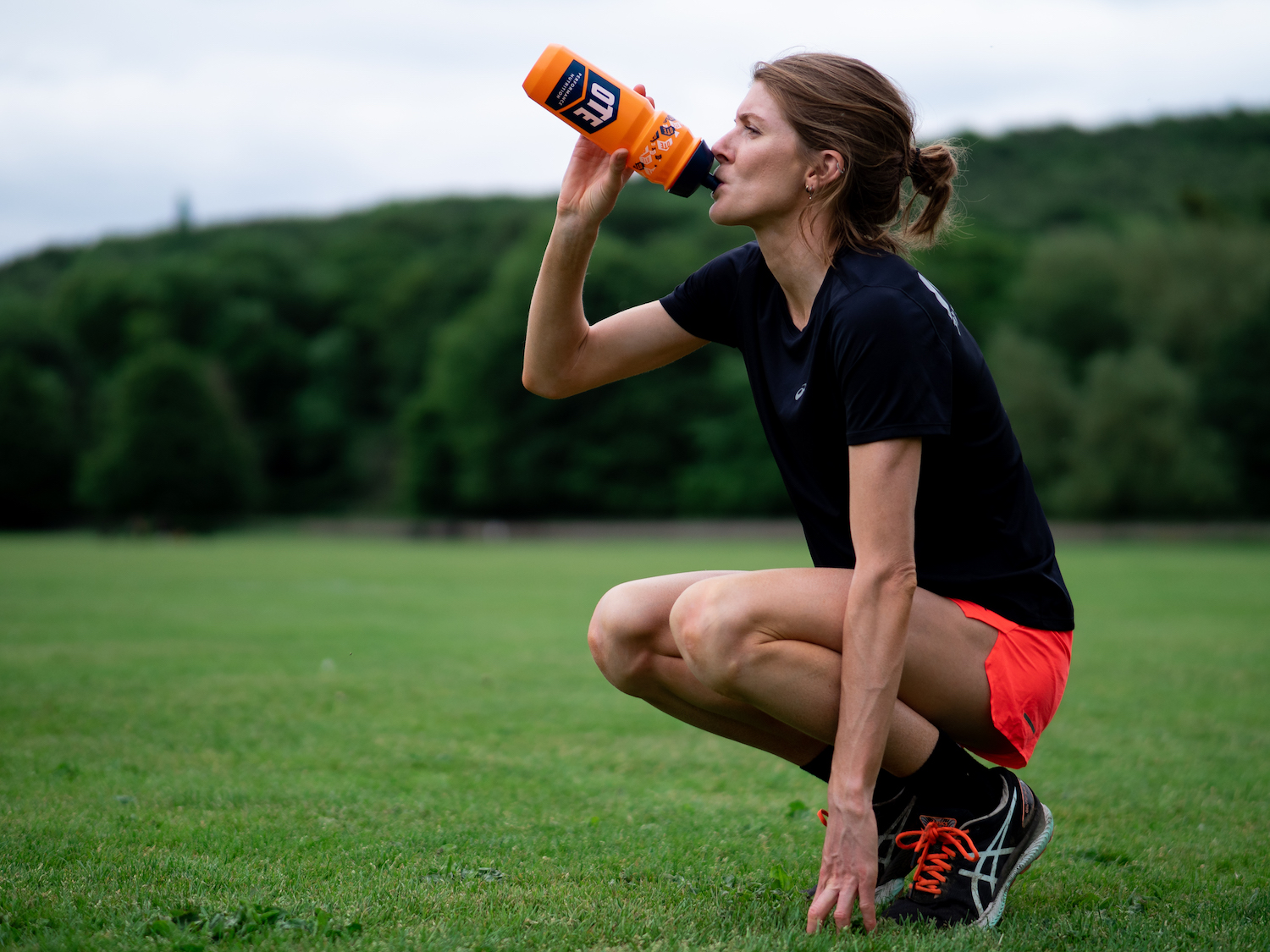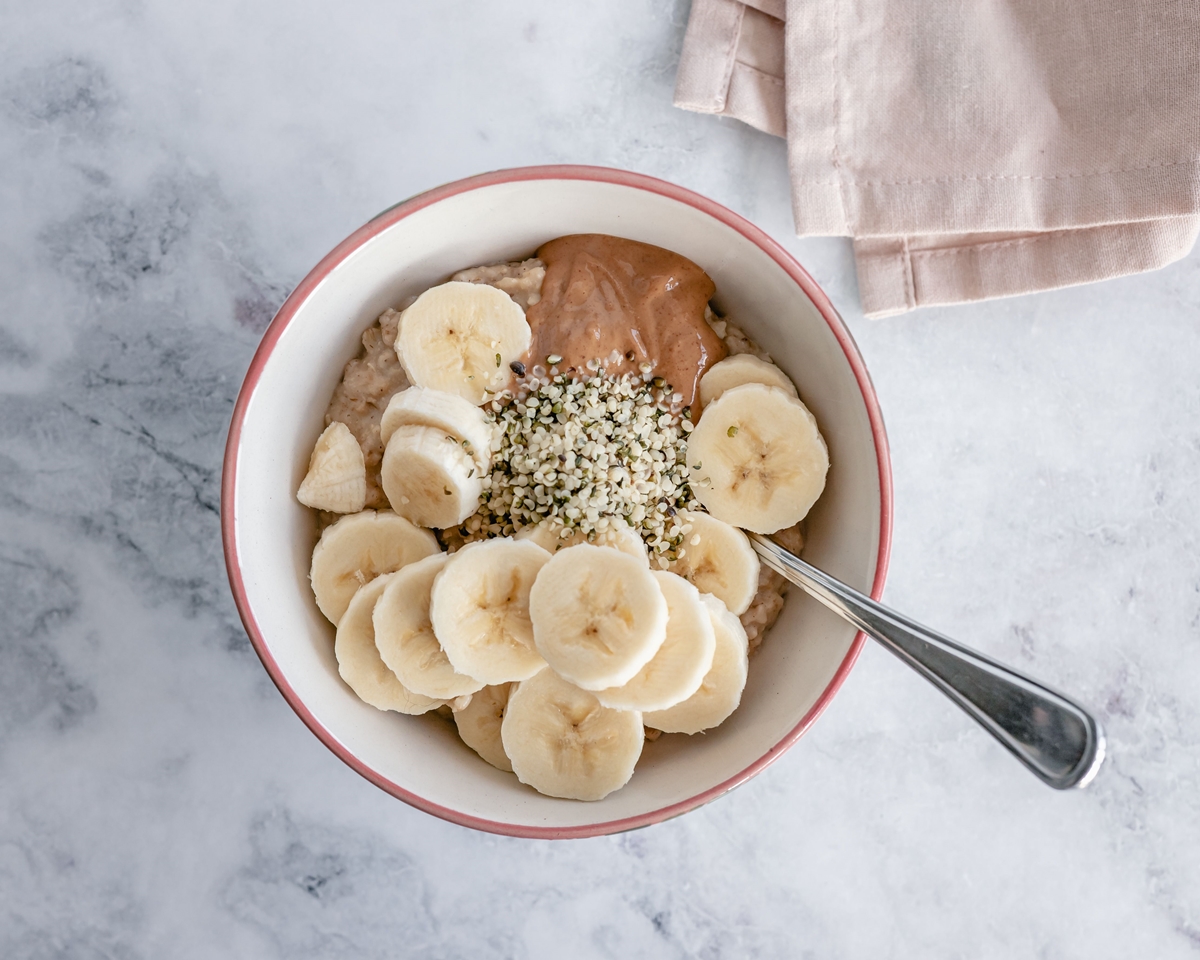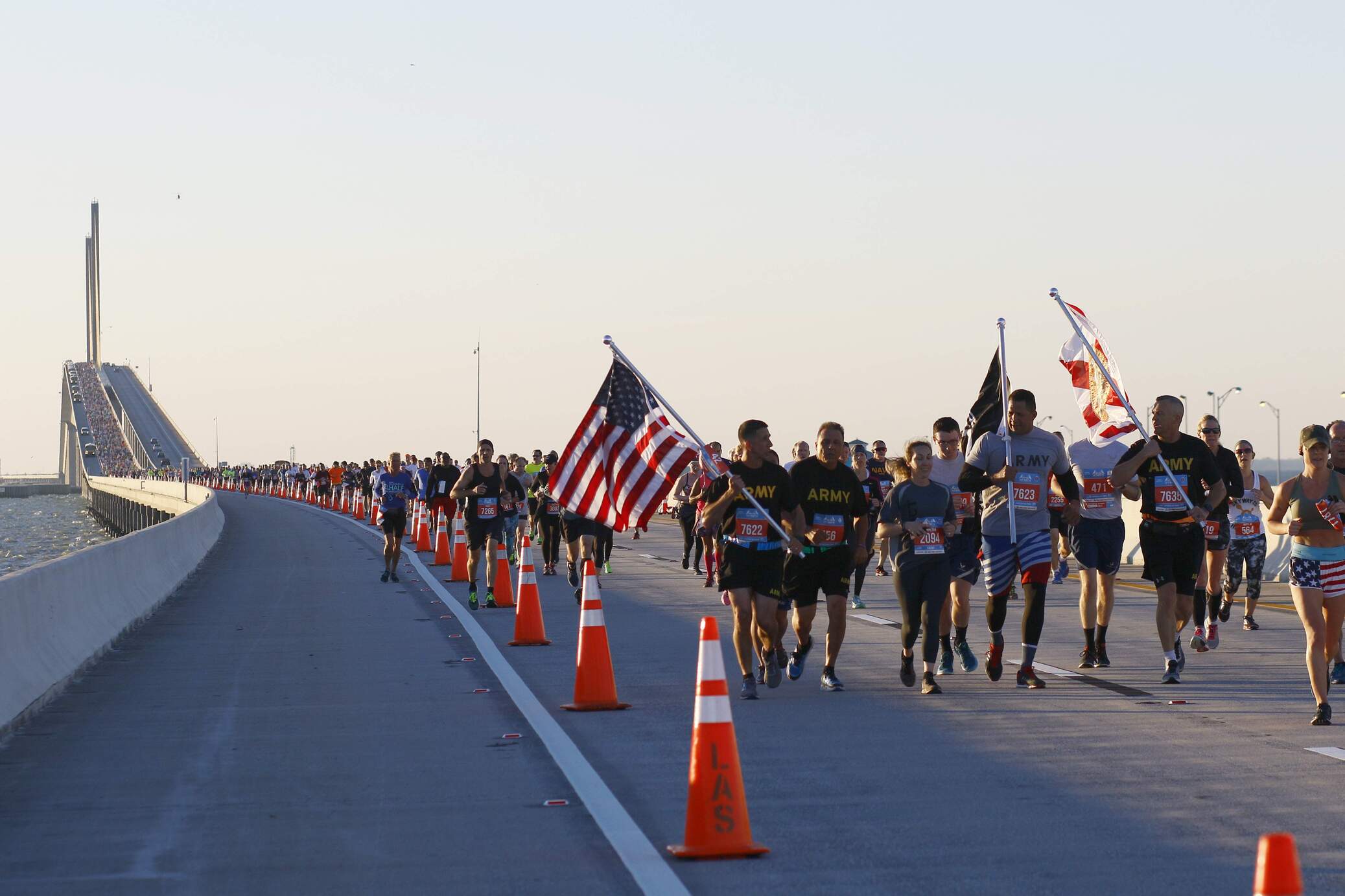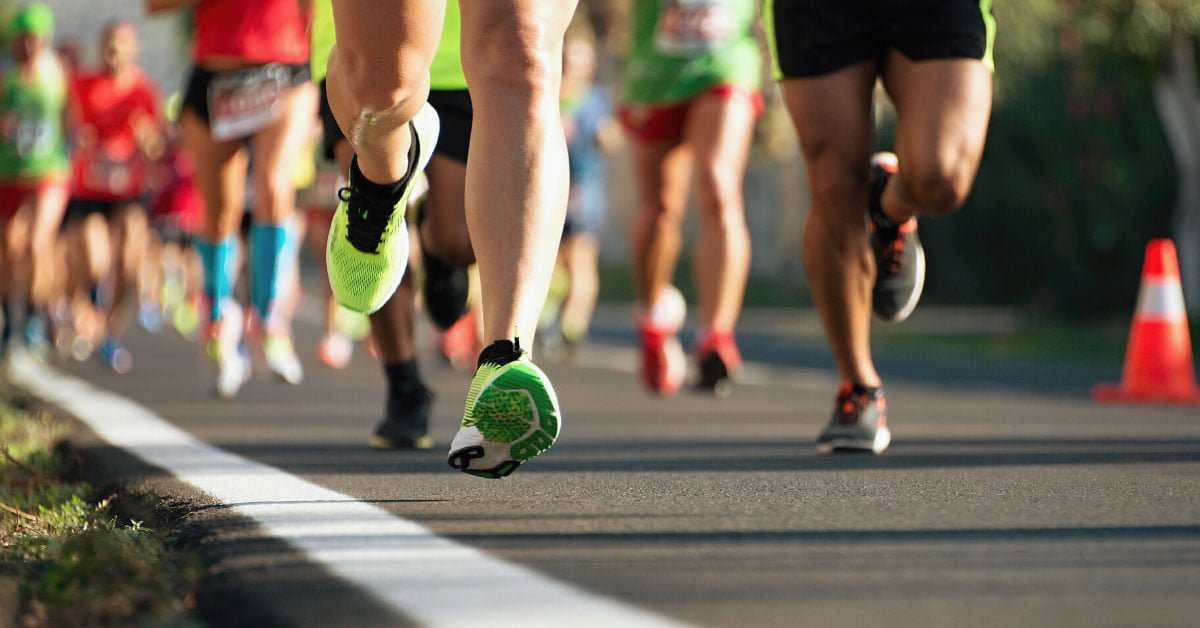

Featured
What To Do Before A 10K Run
Modified: August 21, 2023
Get ready for your upcoming 10K run with our featured tips and advice. Discover what you need to do before the race to ensure a successful and enjoyable experience.
Introduction
Welcome to the world of 10K running, a challenging yet fulfilling endeavor that tests your endurance, determination, and physical fitness. Whether you are a seasoned runner or a beginner looking to take on your first 10K race, proper preparation is essential to ensure a successful and enjoyable experience. This article will guide you through the necessary steps to take before a 10K run, ensuring you are ready to hit the pavement with confidence.
Running a 10K is no easy feat, but with the right approach, it can be a rewarding and exhilarating endeavor. Before you start planning your training schedule or lacing up your running shoes, it’s important to understand what a 10K run entails. A 10K, or 10-kilometer race, is a distance of approximately 6.2 miles. It requires a combination of endurance, speed, and mental fortitude to successfully complete the race. Whether you aim to achieve a personal best or simply want to finish the race comfortably, the following steps will help prepare you for the challenges ahead.
Preparing for a 10K run goes beyond just physical training. It involves a holistic approach that incorporates mental preparation, proper hydration and nutrition, appropriate apparel, and pacing strategies. By following these steps, you can optimize your performance, minimize the risk of injury, and fully enjoy the experience of running a 10K.
Set a Training Schedule
One of the most crucial aspects of preparing for a 10K run is setting a training schedule that suits your fitness level and goals. A well-structured training plan will not only improve your physical endurance but also gradually prepare your body for the intensity of a 10K race.
Before creating your training schedule, it’s important to assess your current fitness level. If you’re new to running or have been inactive for a while, it’s advisable to start with a beginner’s training program. This will allow your body to gradually adapt to the increased physical demands and reduce the risk of injury.
When designing your training schedule, consider incorporating a combination of aerobic runs, interval training, and rest days. Aerobic runs help build endurance and improve cardiovascular fitness, while interval training enhances speed and efficiency. Rest days are crucial for recovery and reducing the risk of overtraining.
Be sure to set realistic goals and gradually increase the intensity and duration of your runs. Start with shorter distances and gradually build up to a full 10K. Ideally, aim to train at least three to four times a week, with a mix of shorter runs during the week and longer runs on the weekends.
Additionally, it’s important to listen to your body and adjust your training schedule accordingly. If you experience any pain or discomfort, it’s crucial to rest and recover rather than pushing through and risking injury. Remember, consistency and gradual progress are key to a successful 10K training plan.
Lastly, don’t be too hard on yourself if you miss a workout or have to modify your schedule. Life can sometimes throw unexpected curveballs, and flexibility is essential in adapting your training plan. Just remember to get back on track as soon as possible and stay committed to your overall goal of completing the 10K race.
Warm Up Properly
Before diving into the intensity of a 10K run, it is vital to warm up your body properly. A proper warm-up routine helps increase blood flow and oxygen to your muscles, enhances flexibility, and prepares your body for the physical demands of the race.
Start your warm-up with some light aerobic exercises such as brisk walking or jogging for 5-10 minutes. This will gradually increase your heart rate and body temperature. Follow it up with dynamic stretches that target major muscle groups such as your legs, hips, and core. Dynamic stretches involve continuous movement and help improve mobility and range of motion.
Include exercises like leg swings, arm circles, lunges with torso twists, and high knees. Perform each exercise for 10-15 repetitions to loosen up your muscles and joints. Additionally, incorporate some running drills such as high knees, butt kicks, and side shuffles to further activate and warm up your muscles.
After completing the dynamic stretches and running drills, focus on specific activation exercises to target the muscles you’ll be using during the run. These exercises can include glute bridges, leg curls, or lunges with torso rotations. Aim for 10-12 repetitions of each exercise to activate the specific muscles and prime them for the upcoming run.
A proper warm-up routine not only prepares your muscles and joints but also helps mentally transition from a resting state to the physical demands of running. It allows you to focus and find your rhythm, which can enhance your efficiency and reduce the risk of injury during the race.
Remember, a warm-up routine should be tailored to your individual needs and preferences. Experiment with different exercises and durations to find what works best for you. Additionally, be mindful of weather conditions; if it’s cold outside, perform a more thorough warm-up to ensure your muscles are adequately primed for the run.
Don’t rush through your warm-up routine—take the time to properly prepare your body for the 10K run. It will not only improve your performance but also minimize the risk of muscle strains, cramps, and other potential injuries.
Hydrate and Fuel Your Body
Proper hydration and nutrition play a crucial role in your performance and overall well-being during a 10K run. It’s important to fuel your body with the right nutrients and maintain optimal hydration levels to sustain energy, prevent fatigue, and enhance recovery.
Hydration should start well before the race day. Aim to consume an adequate amount of water throughout the day leading up to the race. This helps ensure that your body is hydrated and ready for the physical exertion. Avoid excessive consumption of diuretic beverages such as caffeine or alcohol, as they can dehydrate your body.
On the race day, continue to hydrate yourself by drinking water or a sports drink about 1-2 hours before the start time. This allows your body enough time to absorb the fluids and be adequately hydrated at the start of the race. However, avoid overhydrating to the point of discomfort or feeling bloated.
During the run, depending on the conditions and the duration of the race, aim to consume water or sports drinks at regular intervals. This will help replace the fluids lost through sweat and maintain electrolyte balance. Stay mindful of your body’s hydration needs and listen to its signals.
In addition to hydration, fueling your body with proper nutrition is essential for optimal performance. Consume a balanced meal containing carbohydrates, proteins, and healthy fats a few hours before the race. Focus on easily digestible foods such as oatmeal, whole grain toast, yogurt, and fruits.
During longer races, especially those lasting over an hour, consider consuming energy gels or sports drinks to replenish glycogen stores and provide a quick source of energy. Experiment during your training runs to find the fueling strategy that works best for you.
After completing the 10K run, focus on post-run nutrition to aid in recovery. Consuming a combination of carbohydrates and proteins within the first 30-60 minutes after the race can help replenish energy stores and repair damaged muscle tissues.
Remember, every individual’s hydration and nutritional needs may vary. It’s essential to listen to your body, experiment with different strategies during training, and consult with a sports nutritionist if needed. By fueling your body appropriately, you can optimize your performance and enhance your overall race experience.
Dress Appropriately
Choosing the right attire for a 10K run can significantly impact your comfort, performance, and overall experience. Dressing appropriately involves considering factors such as weather conditions, fabric choices, and ensuring proper fit.
When it comes to dressing for a 10K, layering is key, especially if you’re running in a location with unpredictable weather. Begin with a moisture-wicking base layer that helps to keep sweat away from your skin, preventing discomfort and chafing. This can be a lightweight, breathable shirt or tank top.
For cooler temperatures, add a lightweight, long-sleeved layer or jacket to provide additional warmth. Look for fabrics that offer insulation while still allowing for proper ventilation. If it’s a particularly chilly or windy day, consider wearing a hat or headband to protect your ears and maintain body heat.
When selecting your running bottoms, opt for moisture-wicking shorts or leggings that allow for ease of movement. Look for materials that have built-in stretch and provide a comfortable fit. It’s also important to choose bottoms that have pockets or compartments to hold essentials such as keys, energy gels, or your phone.
In warmer weather, wearing moisture-wicking and breathable fabrics becomes even more crucial. Look for lightweight, airy materials that allow for proper air circulation and moisture evaporation. This will help keep your body cool and prevent overheating.
Footwear is another crucial aspect of your running attire. Invest in a pair of running shoes that provide proper support, cushioning, and grip. The right shoe should fit well and feel comfortable throughout your training runs. Additionally, consider wearing moisture-wicking socks to prevent blisters and keep your feet dry.
Don’t forget about accessories such as sunglasses and sunscreen. Sunglasses can protect your eyes from the sun’s glare and provide clarity of vision. Apply a waterproof sunscreen with a high SPF to protect your skin from harmful UV rays, even on cloudy days.
Ultimately, the key to dressing appropriately for a 10K run is finding the balance between comfort, functionality, and weather-appropriate clothing. Experiment during your training runs to determine what works best for you and make adjustments as needed. By dressing appropriately, you’ll be able to focus on the race and perform to your fullest potential.
Choose the Right Shoes
When it comes to running a 10K, choosing the right shoes is crucial for your performance, comfort, and injury prevention. The right pair of running shoes can provide the necessary support, cushioning, and stability to keep you going strong throughout the race.
Before purchasing running shoes, it’s important to understand your foot type and running gait. Visit a specialized running store or consult with a professional to have your foot and gait analyzed. This will help determine if you have a neutral foot strike, overpronation, or supination. Knowing your foot type will guide you in finding the appropriate shoe that addresses your specific needs.
Consider the type of terrain you’ll be running on. If the 10K race involves trails or uneven surfaces, opt for trail running shoes that offer added traction and protection. For road races, choose lightweight running shoes that prioritize cushioning and responsiveness.
When trying on shoes, make sure to wear socks that you typically wear for running. Try on several different brands and models to find the one that fits your foot shape and feels comfortable. Walk or jog around the store to get a feel for the shoes and ensure there are no areas of discomfort or pressure points.
Pay attention to the fit of the shoes. Your toes should have enough room to wiggle, and there should be about a thumbnail’s width of space between your longest toe and the end of the shoe. The shoes should feel snug but not overly tight, and your heel should be well supported and not slipping out of the shoe.
Consider the cushioning and support level that you prefer. Some runners prefer minimal cushioning for a more natural ground feel, while others may need extra cushioning to absorb shock and reduce impact on joints. Determine what feels best for you during your training runs.
Keep in mind that running shoes have a limited lifespan. As a general guideline, it’s recommended to replace your running shoes every 300-500 miles or every 6-12 months, depending on your running frequency and intensity. Pay attention to any signs of wear and tear, such as worn-out treads or loss of cushioning.
Remember, investing in a high-quality pair of running shoes is an investment in your running journey. The right shoes can help prevent common running injuries, provide comfort, and enhance your overall performance during the 10K race. Take the time to find the perfect pair that suits your individual needs, and don’t hesitate to seek professional guidance if needed.
Pace Yourself
When it comes to running a 10K, pacing yourself is essential for a successful and enjoyable race. Pacing refers to maintaining a consistent speed throughout the race, allowing you to achieve your desired finish time and avoid burnout.
One common mistake among runners is starting the race too fast in the excitement of the moment. This can lead to early fatigue and difficulty maintaining the pace later on. To avoid this, it’s important to establish a target pace based on your training and experience.
During your training runs, practice running at different paces to determine your comfortable and sustainable speed. Consider using a GPS watch or running app to monitor your pace and remain within your predetermined target pace during the race.
Breaking the race into smaller segments can also help with pacing. Divide the 10K into mile markers or kilometer markers and set pace goals for each segment. By focusing on one segment at a time, you can maintain a steady pace and prevent overexertion early in the race.
Listen to your body during the race and adjust your pace accordingly. If you feel like you’re pushing too hard or struggling to maintain your target pace, it may be necessary to slow down slightly to conserve energy. Remember, it’s better to finish strong than to burn out halfway through the race.
Utilize the energy of the race environment and the presence of fellow runners to stay motivated and on track. Running with a group or finding a pacing partner can help keep you accountable and provide the necessary encouragement to maintain a consistent pace.
Another effective pacing strategy is practicing negative splits. Negative splits involve running the second half of the race at a slightly faster pace than the first half. This pacing strategy allows you to gradually build momentum and finish the race strong, passing other runners along the way.
Remember, pacing yourself is about finding a balance between pushing yourself to perform your best and maintaining a sustainable effort. By starting conservatively and gradually increasing your speed as the race progresses, you’ll be more likely to maintain a strong finish and achieve your desired result.
Utilize Proper Running Techniques
Adopting proper running techniques is essential for maximizing your performance and minimizing the risk of injury during a 10K run. By focusing on form, breathing, and stride efficiency, you can improve your overall running experience and achieve optimal results.
First and foremost, pay attention to your posture. Keep your head up, shoulders relaxed, and back straight. Avoid slouching or hunching over, as this can impair your breathing and strain your muscles. Engage your core muscles to maintain stability and proper alignment throughout the race.
Focus on your arm movement. Your arms should be relaxed, bent at a roughly 90-degree angle, and swing naturally in sync with your legs. Avoid excessive arm movements that waste energy or cross your body’s midline. Proper arm movements help maintain balance and rhythm while running.
Breathing plays a crucial role in maintaining your energy and endurance. Practice deep belly breathing, inhaling through your nose and exhaling through your mouth. Aim for a steady and rhythmic breathing pattern that matches your stride, and focus on fully exhaling to release stale air and promote efficient oxygen intake.
Stride length and cadence are key factors in running efficiency. Strive for a moderate stride length that is comfortable for you; avoid overstriding, as it can lead to exaggerated heel striking and potential injury. Aim for a cadence (steps per minute) of around 170-180, as a higher cadence promotes better running economy and reduces stress on your joints.
Footstrike is another aspect of running technique to consider. Optimal footstrike varies among individuals, with some runners naturally landing on their midfoot, while others land on their forefoot or heel. Focus on a light and natural footstrike, avoiding excessive pounding or landing too forcefully.
Incorporating interval training and speed workouts into your training regimen can help improve your running efficiency and technique. These workouts not only build speed and endurance but also reinforce proper form and running mechanics.
Lastly, listen to your body and be mindful of any signs of fatigue or pain during the race. If you experience discomfort, adjust your form and stride, take a short walking break if needed, or slow down your pace to prevent injury.
Remember, proper running techniques are developed over time through consistent practice and self-awareness. Film yourself running or seek feedback from experienced runners or coaches to identify areas where you can improve your form. By focusing on form, breathing, stride efficiency, and self-awareness, you can optimize your performance and make the most out of your 10K run.
Stay Motivated and Focused
During a 10K run, staying motivated and focused is crucial to maintain a positive mindset and push through any physical or mental challenges that may arise. Here are some strategies to help you stay motivated and focused throughout the race:
Set Goals: Whether it’s a specific time goal, a personal record, or simply finishing strong, setting clear goals can help keep you motivated during the race. Use these goals as a source of motivation and remind yourself of them when the going gets tough.
Break the Race into Milestones: Mentally dividing the race into smaller milestones can make it feel more manageable and less overwhelming. Focus on reaching one milestone at a time, celebrating each achievement along the way.
Music or Podcasts: Create a playlist of upbeat songs or listen to motivating podcasts that inspire and energize you. Music can uplift your mood, distract you from fatigue, and provide an extra boost of motivation when you need it most.
Positive Self-Talk: Use positive affirmations and self-talk to boost your confidence and maintain a positive mindset. Remind yourself of your training, strength, and resilience. Replace negative thoughts with empowering ones that fuel your determination.
Visualize Success: Before the race, visualize yourself crossing the finish line, achieving your goals, and experiencing the sense of accomplishment. Visualizing success can help enhance your focus and motivate you to keep pushing forward.
Run with Others: Running with a friend, joining a local running club, or participating in a virtual race can provide a sense of camaraderie and motivation. The support and encouragement from others can help you stay motivated and engaged throughout the race.
Break the Monotony: If you find yourself getting bored or losing focus during the race, try changing your running route, scenery, or focusing on different aspects of your form. Engaging your mind in different ways can help maintain your focus and prevent mental fatigue.
Focus on the Present Moment: Instead of getting overwhelmed by the distance or worrying about the finish line, direct your focus to the present moment. Pay attention to your breathing, the scenery around you, or the rhythm of your steps. Staying in the present moment can help you stay engaged and prevent distractions.
Celebrate Milestones: Acknowledge and celebrate each milestone or personal record that you achieve during the race. This can serve as a reminder of your progress and fuel you with the motivation to keep going.
Smile and Have Fun: Remember to smile, enjoy the experience, and have fun! Running a 10K is an accomplishment in itself, so embrace the journey and take pride in your efforts. A positive mindset and a sense of enjoyment can go a long way in keeping you motivated and focused.
By implementing these strategies, you can stay motivated and focused during your 10K run. Remember, a positive mindset and unwavering determination can help you overcome challenges and achieve your goals.
Practice Mental Preparation Techniques
Running a 10K requires not only physical endurance but also mental strength. Practicing mental preparation techniques can help you stay focused, motivated, and overcome any mental hurdles you may encounter during the race. Here are some techniques to help you mentally prepare for your 10K run:
Visualize Success: Close your eyes and imagine yourself running the race with strength, confidence, and ease. Visualize crossing the finish line, hearing the cheers of the crowd, and feeling a sense of accomplishment. This visualization technique can help boost your confidence and reinforce positive outcomes.
Positive Affirmations: Use positive affirmations to instill belief in yourself and your abilities. Repeat empowering phrases such as “I am strong,” “I am capable,” and “I can do this” to reaffirm your confidence and overcome self-doubt.
Controlled Breathing: Deep diaphragmatic breathing can help calm your mind, reduce anxiety, and increase focus. Practice deep breathing during your training runs and incorporate it into your pre-race routine to center yourself and maintain a calm state of mind before the race begins.
Mantras: Develop personal mantras that resonate with you and inspire motivation. Repeat these mantras silently or out loud during the race to shift your mindset and stay mentally strong. Examples of mantras include “I am unstoppable,” “Each step gets me closer to my goal,” or “I am stronger than I think.”
Break the Race into Segments: Rather than being overwhelmed by the entire distance, mentally divide the 10K into smaller segments or checkpoints. Focus on reaching each segment, setting mini-goals along the way. This approach can make the race feel more manageable and help maintain your focus and motivation.
Stay Present: Instead of getting lost in thoughts about the past or future, keep your attention on the present moment. Focus on your breathing, the rhythm of your steps, and the sensations in your body. Being present can help you stay connected to the race and prevent distractions.
Find Your Motivation: Discover what motivates you personally and use it as fuel during the race. Whether it’s running for a cause, proving something to yourself, or setting an example for others, tap into your unique motivation to keep pushing forward when the going gets tough.
Embrace Discomfort: Acknowledge that discomfort is a part of the racing experience. Embrace it and see it as a sign of growth and progress. Practice mental resilience by reframing discomfort as a challenge that you have the strength to overcome.
Positive Self-Talk: Be your own biggest cheerleader during the race. Replace negative thoughts with positive and encouraging self-talk. Remind yourself of your training, your strength, and your determination. Celebrate your accomplishments and use self-talk to reinforce a positive mindset.
Practice Mindfulness: Incorporate mindfulness techniques into your training routine to cultivate mental focus and resilience. Engage in activities such as meditation or body scans to increase your awareness of the present moment, reduce stress, and strengthen your mental clarity.
By incorporating these mental preparation techniques into your training and race day routine, you can develop a resilient and focused mindset. Remember, your mental state plays a significant role in your performance, so practice these techniques regularly to build mental strength and ultimately enhance your 10K running experience.
Finish Strong and Celebrate
The final stages of a 10K race are where mental and physical strength combine to propel you towards the finish line. Here are some strategies to help you finish strong and celebrate your achievement:
Dig Deep and Push Yourself: As you approach the last stretch of the race, remind yourself of the hard work and training you have put into preparing for this moment. Dig deep and tap into your reserves of mental and physical strength. Push your limits, give it your all, and maintain a strong, steady pace.
Use Visual Cues: Identify a visual cue ahead, such as a landmark or runner, and use it as motivation to keep going. Focus your attention on surpassing that cue, then identify another one, and keep repeating the process. Breaking down the final moments of the race into smaller, achievable goals can help you stay focused and motivated.
Engage Your Support System: If your friends or family members are present, look for them in the crowd and draw energy from their support and cheering. Their presence can provide that extra boost of motivation to finish the race strong. If they are not physically present, visualize their support and cheering in your mind.
Bring on the Sprint: If you have enough energy left in the tank, consider sprinting towards the finish line. This burst of speed can make you feel strong and empowered, as you pass fellow runners and approach the culmination of your race. Use this final push to power through any remaining fatigue and cross that finish line with a flourish.
Soak in the Atmosphere: As you approach the finish line, take a moment to soak in the atmosphere and appreciate the journey you have just completed. Absorb the energy of the crowd, the cheers, and the sense of accomplishment. Smile, lift your arms in celebration, and revel in the joy of completing your 10K run.
Reflect on Your Achievement: Once you have crossed the finish line, take a few moments to reflect on your achievement. Think about how far you have come, both in terms of your training and the race itself. Acknowledge the effort you have put in and the goals you have accomplished. Take pride in your accomplishment, no matter the time or place.
Celebrate and Reward Yourself: After your race, take time to celebrate and reward yourself for your hard work. Treat yourself to a delicious meal, a relaxing massage, or a small personal reward that you’ve been looking forward to. Reflect on the journey and take pride in what you have accomplished.
Learn and Set New Goals: Every race provides an opportunity for growth and learning. Reflect on your experience and identify areas where you excelled or areas where you can improve. Use this knowledge to set new goals and continue your journey as a runner. Whether it’s improving your time, conquering a new distance, or tackling a different terrain, set new targets to challenge and inspire yourself.
Remember to Enjoy the Moment: Running a 10K is a significant achievement. Take a moment to savor the accomplishment and the sense of fulfillment that comes with it. Allow yourself to bask in the sense of pride and joy that comes from reaching your goal.
Finishing a 10K race requires mental and physical resilience, but it’s also a time for celebration and reflection. By following these strategies, you can finish strong, celebrate your accomplishment, and move forward with renewed enthusiasm for your future running endeavors.







